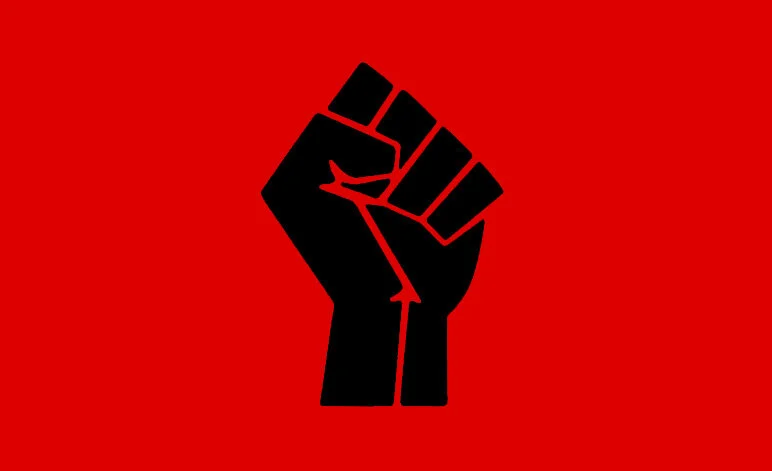Working Within the Nonprofit Industrial Complex: A Reflection
By Natasha Tracy
With the rise of neoliberalism and decreased government involvement in welfare, nonprofits have filled the gap to provide social services to those in need (INCITE! 2007). The nonprofit industrial complex (NPIC) refers to the eclectic collection of privatized nonprofits that provide social service, usually with financial aid from corporations and the government (Samimi, 2010). The NPIC has grown considerably in strength after the rise of neoliberalism in the 1970s due to the government’s lack of willingness to address social issues (INCITE! 2007). As of 2016, 1.48 million organizations have filed a 501(c)(3) status with the IRS (NCSS Project Team, 2020).
A few problems have arisen from this decentralized form of aid, the first being the need of nonprofits to professionalize to secure funding from donors. Nonprofits are increasingly expected to include college-educated leadership, which forms a class barrier between those giving aid and those who receive it (INCITE! 2007). This reduces the ability of the working class to contribute to the social work that stands to benefit them, reducing the autonomy of the working class and fostering a lack of understanding between providers and beneficiaries. A brief look of the boards of any major nonprofit -- Feeding America, Habitat for Humanity, Bill and Melinda Gates Foundation, American Red Cross, and many more – and you will see that finding someone who did not graduate from a prestigious university is an anomaly. From my personal research, I have found that many board members also serve as CEOs for other companies. This is not to disqualify the contributions they have made, but to shed a critical light on the type of background that is expected to give aid – something that many grassroots organizations with few connections struggle to do, so many find themselves giving into a corporate model to keep themselves afloat.
Another problem is that much time and energy is needed to secure funding. Organizations that wish to stay true to their grassroots nature need to be continuously asking their communities for funding, which they may not be able to offer. Meanwhile, those that turn to corporations and government funding need to spend time writing grants. Those that do use private funding often find themselves forced to adhere to standards for funding, often narrowing their scope of work to a specific cause – which does not address social injustice on a large scale, as many social problems are systemic and multifaceted (INCITE! 2007). In fact, if a nonprofit helps a cause they did not specify when filing for their 501(c)(3) status, this is labeled as mission drift, and they risk losing all their funding and tax status (Samimi, 2010). Further, funding is not guaranteed and can be hard to come by. I have been denied donations from large companies, all of which explained that our goals did not match their mission statement. Sparing a $50 gift card, some extra gardening tools, or several boxes of cleaning supplies would not affect these large corporations in the slightest, yet they limit their charitable actions to simply meet – but not go beyond – the amount needed for them to receive a tax deduction and to keep the supply of these products artificially low. (The need to keep supply artificially low is also demonstrated when these corporations chose to waste unused products rather than donate them.) Those that have a history of using funds efficiently or become well known tend to receive more grants, cumulating to a snowball effect (Oster, 2021).
The last problem with the NPIC that I will touch upon is its negative effects on social justice movements. The need for approval from the government for tax status (and therefore ability to apply for and receive funding) has historically marginalized minority groups (Samimi, 2010). Together with the need to professionalize and precious time and resources, dedicated towards funding, nonprofits are forced to adopt a business-like model that separates services and fundraising lead by those who are already privileged (Samimi, 2010 & INCITE! 2007). This diminishes the impact of social movements while also quelling dissent – those who need a service like healthcare are less likely to dissent the government if they can meet their needs from a nonprofit (INCITE! 2007). This incorporation of nonprofits into the state apparatus is a tool to absorb organized dissent and prevent the downfall of capitalism (INCITE! 2007).
I want to end this post with some of my personal reflections. While I understand that the NPIC is a lesser evil that can create material change, I propose no other effective solutions other than working closely with your target community within grassroots organization. For this reason, I highly recommend The Revolution will not be Funded: Beyond the Non-profit Industrial Complex for advice from revolutionaries. My work with GRMR is highly rewarding, and I make every possible effort to ensure my work reflects the needs of our community. I do not see myself working in any other field, and I have learned so much from our community. But I also feel frustrated when my grants get denied and I must admit that I am struggling to find a way to achieve our goals. I wish our work was not so reliant on the benevolence of corporations, but for now, that is our only way forward.
Works Cited
INCITE! The Revolution will not be Funded: Beyond the Non-profit Industrial Complex. Duke University Press, 2007.
NCSS Project Team. The Nonprofit Sector in Brief 2019. Urban Institute National Center for Charitable Statistics, 2020. nccs.urban.org/publication/nonprofit-sector-brief-2019#the-nonprofit-sector-in-brief-2019.
Oster, Russ. A Guide to Grants for Grassroots Organizations. GrantStation, 2021. grantstation.com/gs-insights/A-Guide-to-Grants-for-Grassroots-Organizations.
Samimi, Jennifer. Funding America’s Nonprofits: the Nonprofit Industrial Complex’s Hold on Social Justice. Columbia University, 2010, 8(1):17-25. https://doi.org/10.7916/cswr.v8i1.1967

